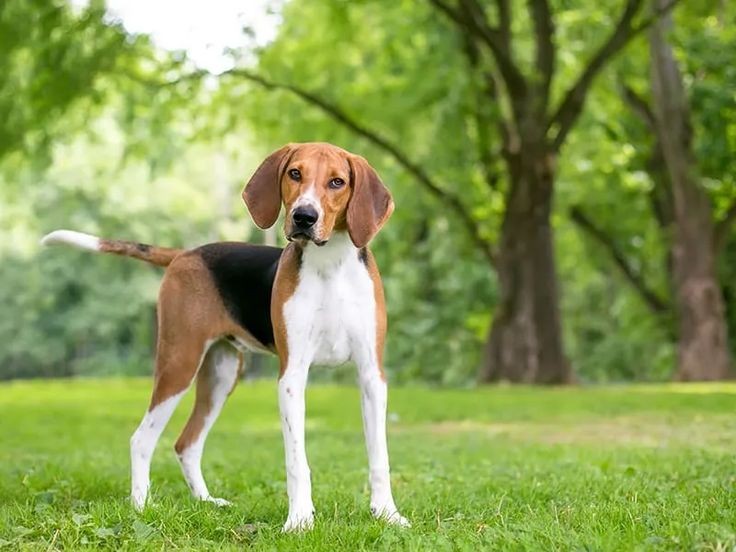
The Beagle, a beloved small hound breed, shares notable similarities with several other dog breeds in terms of appearance, hunting abilities, and temperament. These breeds, often categorized as scent hounds, typically feature drooping ears, sturdy builds, and exceptional tracking capabilities. While Beagles are distinguished by their compact size, tri-colored coats, and friendly nature, comparable breeds like the Foxhound, Harrier, and Basset Hound exhibit parallel traits owing to their common ancestry and breeding purposes. Understanding these similarities helps prospective dog owners make informed choices based on their specific needs and lifestyle preferences.
Dogs Similar to Beagles
Physical Characteristics
Several breeds share physical traits with the Beagle, particularly in terms of size and appearance. The Harrier, essentially a larger version of the Beagle, stands 19-21 inches at the shoulder and shares the same tri-colored coat pattern. The English Foxhound also displays similar coloring and build but is considerably larger at 21-25 inches tall. The Basset Hound has comparable drooping ears and coloring but features shorter legs and a longer body.
Hunting Abilities
Like Beagles, these similar breeds excel at scent work and tracking. The Harrier was specifically bred for hunting hares and foxes in packs, while the English Foxhound specializes in fox hunting with impressive stamina. The Basset Hound, despite its shorter stature, demonstrates excellent scenting abilities particularly for tracking rabbits and other small game. These breeds share the Beagle's strong prey drive and tendency to follow their nose, requiring secure fencing and careful management during off-leash activities.
Understanding Beagle's Physical Traits and Temperament
Body Structure and Build
The Beagle comes in two distinct size varieties recognized by kennel clubs: those under 13 inches (33 cm) at the withers weighing under 20 pounds (9 kg), and those between 13-15 inches (33-38 cm) weighing 20-30 pounds (9-14 kg). Unlike other similar breeds covered previously, Beagles have a uniquely solid and compact build, appearing heavy for their height, with distinctive large brown eyes and a short coat combining black, tan and white coloring.
Social Nature and Training Considerations
While the previous sections focused on comparing hunting abilities across breeds, this section specifically examines the Beagle's unique temperament traits. The breed demonstrates exceptional sociability, forming easy friendships with both humans and other dogs due to their pack-hunting heritage. However, their independent nature and high distractibility can make training challenging. Though active outdoors, they adapt well as calm house dogs but may become destructive if left alone extensively. Their intelligence allows them to be trained for multiple purposes including pheasant flushing and blood trailing, though they typically require e-collar assistance for reliable obedience. Special consideration must be given to their tendency to follow scents, necessitating secure containment and leashed walks.
Alternative Dog Breeds That Share Beagle Characteristics
Family-Friendly Companions
While previous sections focused on physically similar breeds and hunting abilities, this section examines breeds that match the Beagle's exceptional family-friendly nature. The Cavalier King Charles Spaniel shares the Beagle's gentle temperament and affection for children, though in a smaller package. Similarly, the Brittany exhibits the same playful and cheerful disposition, making it an excellent family pet. These breeds also demonstrate comparable social skills with both humans and other dogs, though they tend to be more trainable than Beagles.
Exercise and Activity Requirements
Unlike previous discussions of physical traits, this section analyzes breeds with similar exercise needs and outdoor tendencies. The Cocker Spaniel matches the Beagle's requirement for daily vigorous activity while maintaining a calm indoor demeanor. The Pointer parallels the Beagle's enthusiasm for outdoor adventures and need for secured spaces due to their strong pursuit instincts. Both breeds require similar levels of physical activity - approximately 1-2 hours daily - and benefit from fenced yards to prevent wandering. However, these alternatives typically demonstrate better recall abilities compared to Beagles, making them more suitable for off-leash activities.
Dogs Similar to Beagles
Scent Hound Varieties
While previous sections covered larger scent hounds like the Harrier and English Foxhound, this section examines smaller breeds with similar tracking abilities. The Petit Basset Griffon Vendéen (PBGV) matches the Beagle's size at 13-15 inches tall and shares their keen sense of smell and hunting drive. The American Foxhound, though slightly taller at 21-25 inches, demonstrates comparable tracking abilities and pack mentality. These breeds exhibit the same tendency to follow their noses and require similar containment considerations, though PBGVs tend to be more independent while American Foxhounds are generally more trainable.
Companion Breed Alternatives
Unlike previous discussions of family-friendly traits, this section focuses specifically on breeds that match the Beagle's size and maintenance needs. The Field Spaniel, standing 17-18 inches tall, shares the Beagle's moderate grooming requirements and friendly disposition. The Whippet, though leaner in build, matches their height at 18-22 inches and demonstrates similar exercise needs requiring daily vigorous activity. Both alternatives exhibit comparable adaptability as house pets while maintaining active outdoor personalities. However, these breeds typically show less stubbornness in training and reduced tendency toward excessive barking compared to Beagles.
Conclusion
Several dog breeds share important characteristics with Beagles, particularly in terms of physical traits, hunting abilities, and temperament. The Harrier and English Foxhound most closely resemble Beagles in appearance and hunting prowess, while the Basset Hound shares their scenting abilities despite having a different body structure. Alternative breeds like the Cavalier King Charles Spaniel and Brittany match the Beagle's family-friendly nature, while the Petit Basset Griffon Vendéen and American Foxhound demonstrate similar tracking capabilities.
For those seeking a Beagle-like companion, the choice of alternative breed should depend on specific priorities - whether that's physical appearance, hunting ability, family compatibility, or exercise requirements. While many breeds share individual characteristics with Beagles, each alternative offers its own unique combination of traits, with some providing better trainability or reduced stubbornness compared to Beagles. This understanding can help potential dog owners make informed decisions based on their lifestyle needs and preferences.